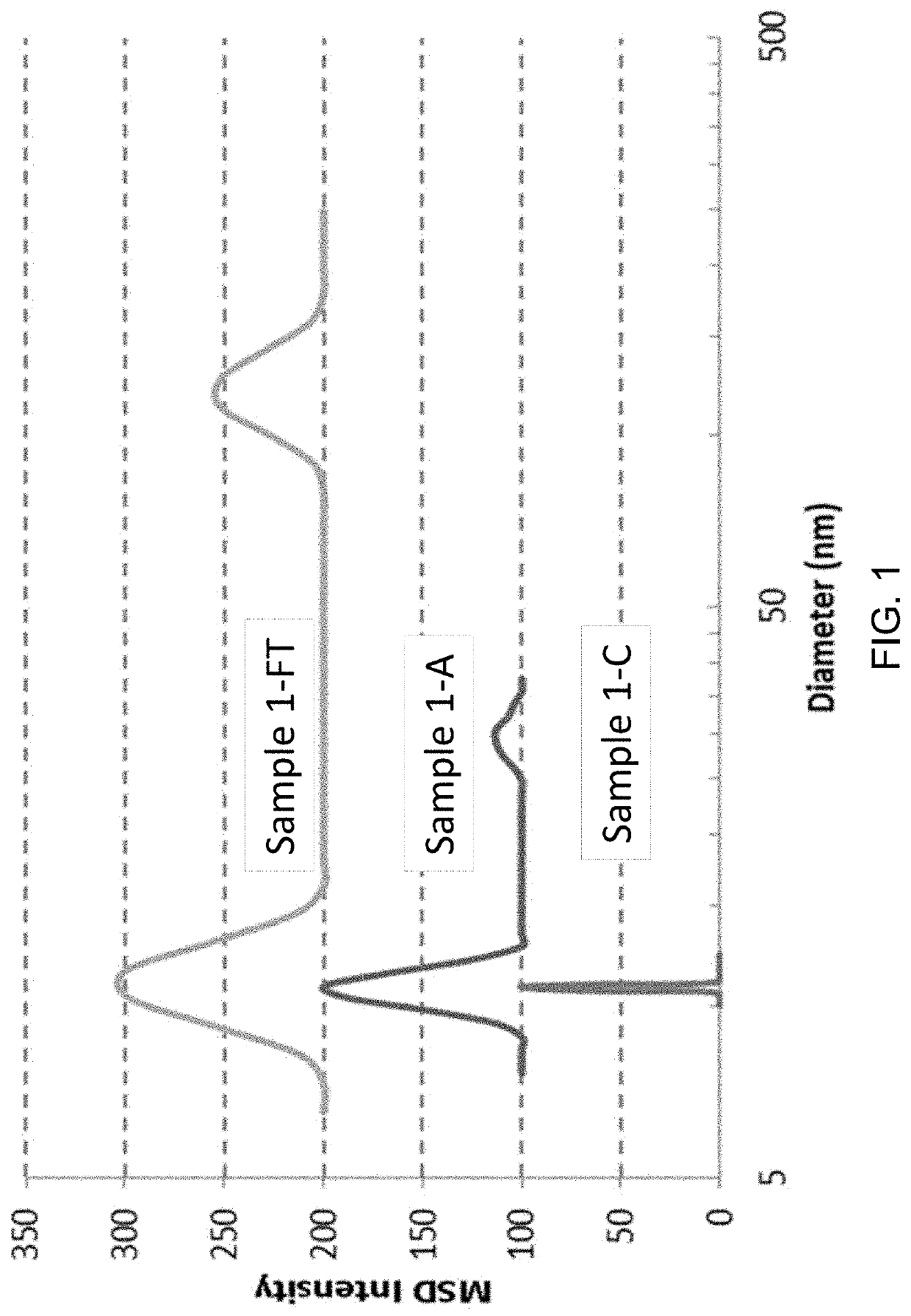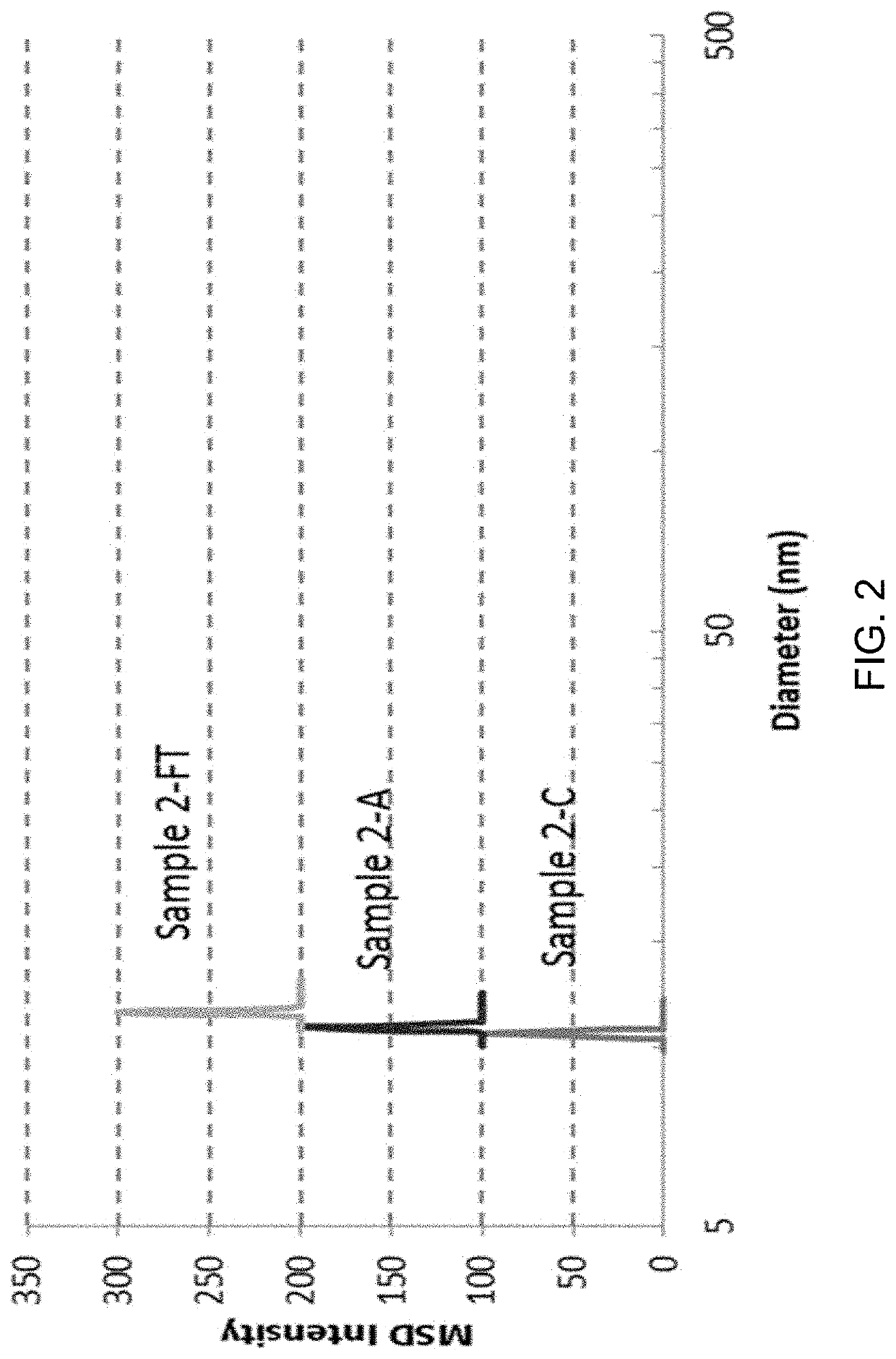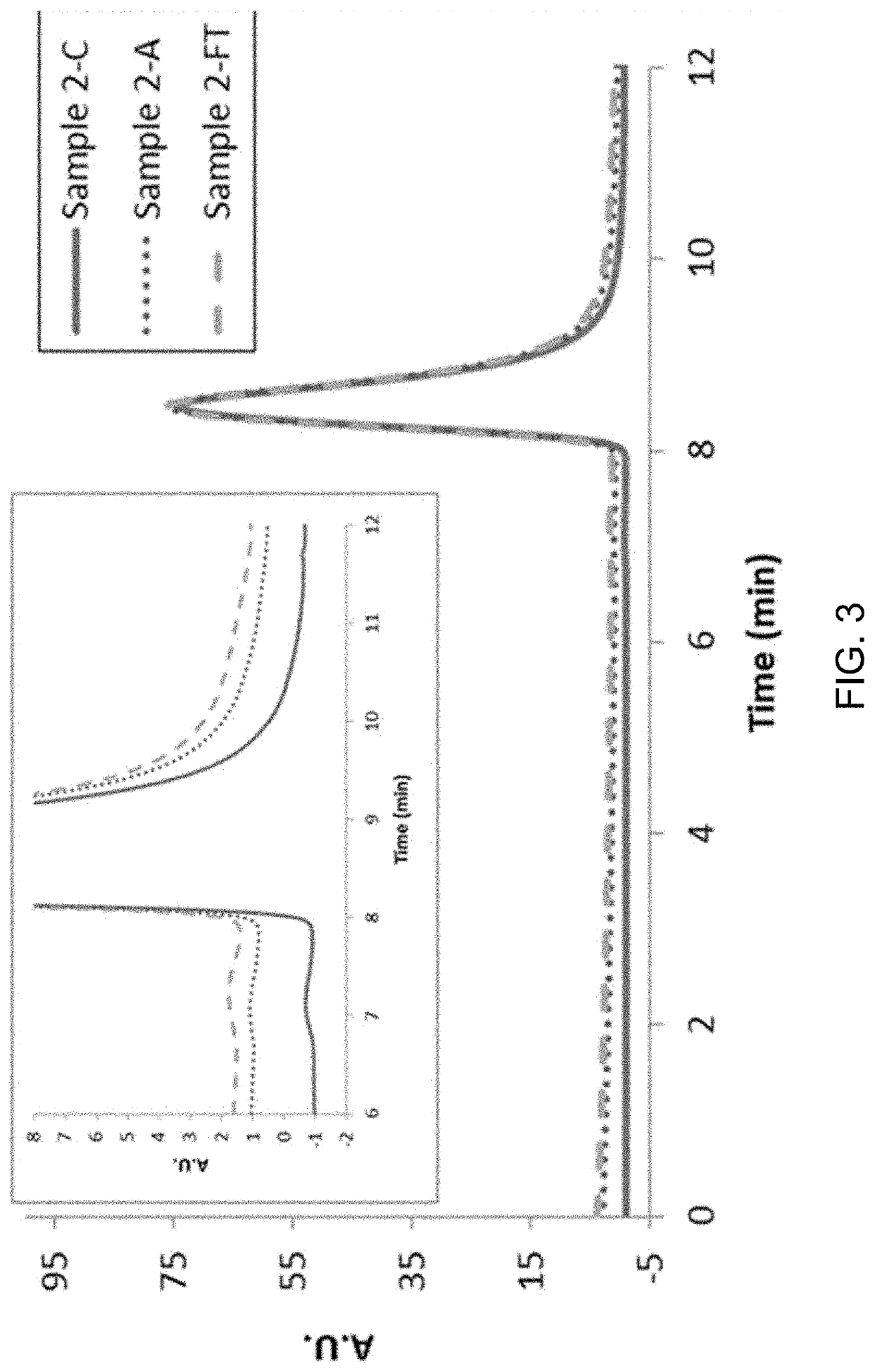Excipient compounds for protein formulations
- Summary
- Abstract
- Description
- Claims
- Application Information
AI Technical Summary
Benefits of technology
Problems solved by technology
Method used
Image
Examples
example 1
on of Formulations Containing Excipient Compounds and Test Protein
[0150]Formulations were prepared using an excipient compound and a test protein, where the test protein was intended to simulate either a therapeutic protein that would be used in a therapeutic formulation, or a non-therapeutic protein that would be used in a non-therapeutic formulation. Such formulations were prepared in 50 mM histidine hydrochloride with different excipient compounds for viscosity measurement in the following way. Histidine hydrochloride was first prepared by dissolving 1.94 g histidine in distilled water and adjusting the pH to about 6.0 with 1 M hydrochloric acid (Sigma-Aldrich, St. Louis, Mo.) and then diluting to a final volume of 250 mL with distilled water in a volumetric flask. Excipient compounds were then dissolved in 50 mM histidine HCl. Lists of excipients are provided below in Examples 4, 5, 6, and 7. In some cases excipient compounds were adjusted to pH 6 prior to dissolving in 50 mM hi...
example 2
Measurement
[0151]Viscosity measurements of formulations prepared as described in Example 1 were made with a DV-IIT LV cone and plate viscometer (Brookfield Engineering, Middleboro, Mass.). The viscometer was equipped with a CP-40 cone and was operated at 3 rpm and 25° C. The formulation was loaded into the viscometer at a volume of 0.5 mL and allowed to incubate at the given shear rate and temperature for 3 minutes, followed by a measurement collection period of twenty seconds. This was then followed by 2 additional steps consisting of 1 minute of shear incubation and subsequent twenty-second measurement collection period. The three data points collected were then averaged and recorded as the viscosity for the sample.
example 3
oncentration Measurement
[0152]The concentration of the protein in the experimental solutions was determined by measuring the optical absorbance of the protein solution at a wavelength of 280 nm in a UV / VIS Spectrometer (Perkin Elmer Lambda 35). First the instrument was calibrated to zero absorbance with a 50 mM histidine buffer at pH 6. Next the protein solutions were diluted by a factor of 300 with the same histidine buffer and the absorbance at 280 nm recorded. The final concentration of the protein in the solution was calculated by using the extinction coefficient value of 1.264 mL / (mg×cm).
PUM
| Property | Measurement | Unit |
|---|---|---|
| Temperature | aaaaa | aaaaa |
| Temperature | aaaaa | aaaaa |
| Molar density | aaaaa | aaaaa |
Abstract
Description
Claims
Application Information
 Login to View More
Login to View More - R&D
- Intellectual Property
- Life Sciences
- Materials
- Tech Scout
- Unparalleled Data Quality
- Higher Quality Content
- 60% Fewer Hallucinations
Browse by: Latest US Patents, China's latest patents, Technical Efficacy Thesaurus, Application Domain, Technology Topic, Popular Technical Reports.
© 2025 PatSnap. All rights reserved.Legal|Privacy policy|Modern Slavery Act Transparency Statement|Sitemap|About US| Contact US: help@patsnap.com



